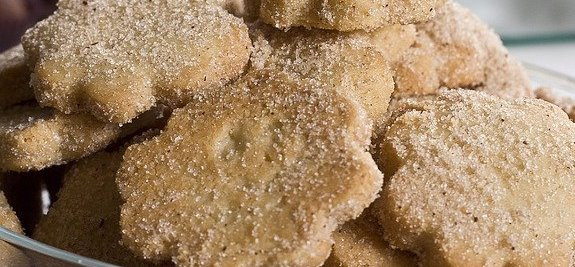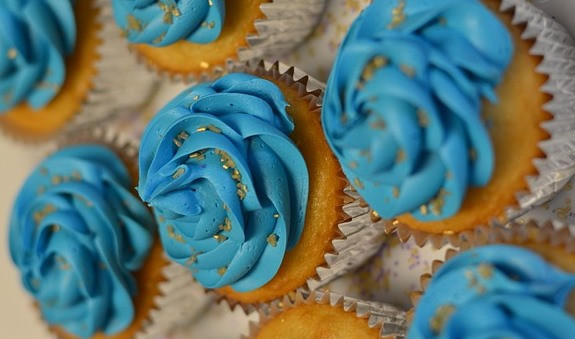Changing properties of fats and oils
When Fats such as butter are beaten with sugar (called creaming) air becomes trapped in the mixture making the mixture fluffier and lighter in colour. This aeration (aeration means incorporating air) gives cakes a light and spongy texture when cooked. Foods can be aerated in many different ways such as whisking.
When you rub fat into flour, you cover the flour particles with fat giving the flour particles a waterproof coating and this coating prevents long gluten molecules forming when water is added to the flour. This process means the dough cannot become stretchy and baked goods like shortbread keep firm and crumbly or ‘short’ which is why we call it shortening. We use shortening when making pies and tarts because the base doesn’t rise and forms a solid case. Some fats are called ‘shortening’ as they have 100% fat content and contain no water which helps stop gluten formation and prevents steam from raising the food.

Fats have plasticity as we are able to manipulate and spread them as fats contain a mixture of different triglycerides. These different triglycerides all melt at different temperatures so fats gradually soften over a range of temperatures rather than melting at just one. The more plasticity a fat has, the easier it is to spread. Unsaturated fats tend to be soft or liquid at room temperature, while saturated fats tend to be solid meaning the more unsaturated fatty acids a fat or oil contains the more plasticity the fat or oil will have making it easier to spread.
Plasticity is useful for rubbing fat into flour for shortbread, spreading butter or cream cheese onto toast or decorating cakes with buttercream.

Emulsification keeps oil and water in a stable emulsion. Emulsions are formed when oily and watery liquids are shaken together as the droplets of one spread out through the other. Milk, mayonnaise and margarine are all emulsions. Oil and water don’t usually mix together so emulsions separate out again unless you keep shaking or stirring them or use an emulsifier. The molecules in an emulsifier have two different ends one is hydrophilic (attracted to water) the other is hydrophobic (repulsed by water). When you add emulsifier, the water molecules bond the hydrophilic side and the oil molecules bond to the hydrophobic side, holding the oil and water together in a stable emulsion, preventing them from separating.
Emulsions can either be water in oil (butter or margarine) or oil in water (mayonnaise, salad dressing and milk). Egg yolks contain natural emulsifier call lecithin (also found in soya) which is used as the emulsifier in mayonnaise and margarine.

Emulsions are often used as sauces such as mayonnaise and salad dressings such as vinaigrette. Hollandaise sauce is another example of an emulsion sauce. It contains butter, water and egg yolks (with lecithin acting as an emulsifier).
In this video Jamie Oliver shows you how to make a Hollandaise sauce.
